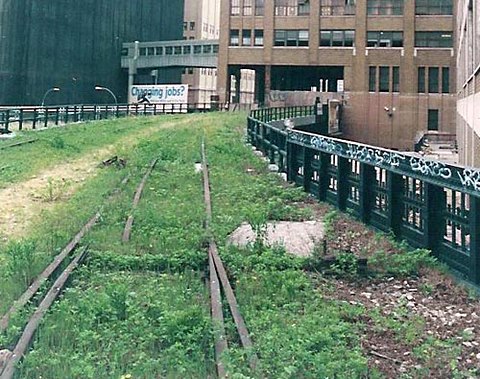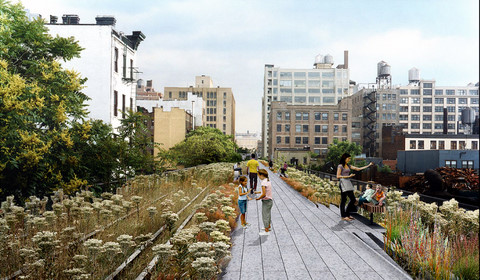There may be an answer laid in the High Line in New York. It is an elevated rail network on bridges spanning 22 blocks and 1.45 miles long through three of Manhattan's most dynamic neighborhoods: Hell's Kitchen/Hudson Yards, West Chelsea, and the Gansevoort Market Historic District. The railway line was used to transport goods from one side of the city to the other without disturbing street level traffic but was gradually declined after the 1950s.

Since the mid 1980s, a group of private property owners who purchased land under the High Line at prices that reflected its easement have lobbied for demolition of the entire structure. Much credit for the fact that the High Line survived the demolition efforts in the mid- and late 1980s goes to Peter Obletz, a Chelsea resident, activist, and railroad enthusiast, who challenged demolition efforts in court and tried to reestablish rail service on the Line. In 1999 Friends of the High Line (FHL) was founded by Joshua David and Robert Hammond to advocate for the High Line's preservation and reuse as public open space.

A design competition was hold in 2003. The final proposal to be constructed is being designed by Field Operations (landscape architects) and Diller Scofidio + Renfro (architects). It would create a fabulous stripe of public open space travelling through building blocks at an elevated level in a scale never realised before in the world. Such dynamic creation would inject much vibrancy in the local life of the neighbourhoods, liven up streets and bring another green dimension to the city.

Below is a 6 minute documentary made by the Friends of the High Line offering an overview of High Line, its history, the movement to save it, and designs for its reuse. Directed and produced by John Zieman -
Finally there is something which makes me really want to visit New York. Looking back to Hongkong, while we have 2 gigantic vacant plots next to the harbour - the West Kowloon and the Kai Tak, have we ever thought about how we could plan these spaces so that they would become a generator for the surrounding neighbourhoods as well? And for other urban regeneration projects, being overseen by the Urban Renewal Authority, who has the vision to not just focus on separate plots but to create strategic linkages across the neighbourhood like the Central-Mid-Levels Escalator to bring in another dimension to the city fabric?
Even for the proclaimed success of the Central-Mid-Levels Escalator, is there anybody living in the area thinking on further evolution of the escalator? Perhaps we could have a Central-Mid-Levels Escalator 2.0, which could be either introducing green spaces on top / bottom of the existing escalator, or onstructing green skywalks similar to the High Line connecting the various levels of life?
Or look at the pedestrain footbridge networks we have around Central and Wanchai. Could the government actually co-operate with the developers of nearby commercial buildings to refurbish them and integrate green features and plants fully with the footbridge so we could have some fluid park spaces across the city where everybody could have a rest or enjoy their commute? This additional density of green would not cause any negative impact on the existing infrastructure, but instead further enhance the cityscape.
Further reading -
official website - http://www.thehighline.org
photo gallery - http://www.flickr.com/photos/friendsofthehighline
design competition entries - http://www.thehighline.org/competition
similar projects around the world - http://www.thehighline.org/about/similarprojects.html
central-mid-levels escalator - http://en.wikipedia.org/wiki/Central-Mid-Levels_escalators

No comments:
Post a Comment